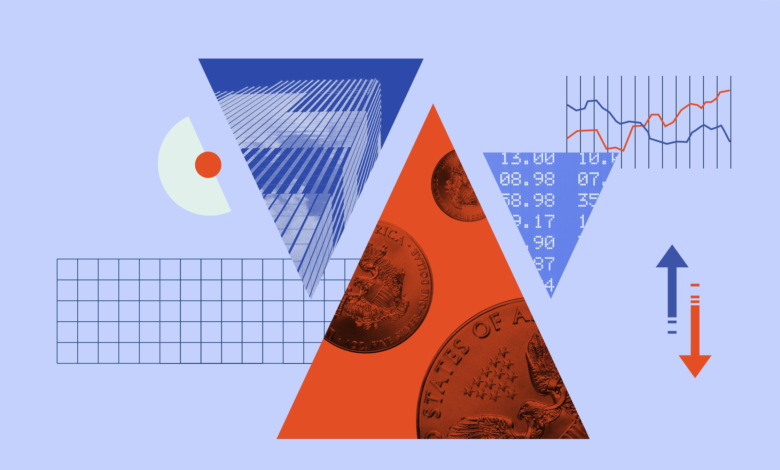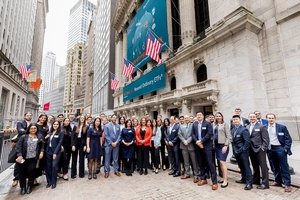Active Stock Fund Managers Have Got a Deal for You. Should You Take It?

Under pressure from outflows, active managers are in a race to launch exchange-traded fund versions of strategies many already offer as traditional mutual funds. To give a sense of that, here’s a time-lapse of new active equity ETF inceptions by year (not all of these are siblings or cousins of existing funds but many are).
These active ETFs are almost always cheaper than comparable fund versions. To illustrate, here’s a side-by-side comparison of the average expense ratio of active stock ETFs and open-end funds by Morningstar Category.
The average active ETF usually costs about 30 to 40 basis points less per year than the average open-end fund of the same type.
Brighter Picture?
Does that brighten the outlook for active stock funds? Most active stock funds have lagged their indexes over time but that was net of the higher expense ratios they’ve levied as open-end funds. So, the question becomes whether they stand better odds of outperforming in their next iteration as lower-cost active ETFs.
To address that question, I ran a simple study: I compiled all active US and international stock funds’ monthly returns since January 2001 along with their monthly Morningstar Category classifications. The coverage included dead funds, but I limited it to the oldest share class of each fund.
Each month, I calculated the average return of active funds included in each Morningstar Category based on the funds assigned to it that month, and so forth for subsequent months through August 2025. Then I compounded those average monthly returns over the full 296-month period and compared the result with the benchmark for each Morningstar Category, which yielded the annual excess return for actively managed funds in each category.
Here’s how the numbers came out:
In summary, the average fund lagged its index in 15 of the 27 categories shown, and the shortfalls were large in some of the most popular categories like large blend.
How might this picture change once we factor in the anticipated cost savings from offering strategies like these in an ETF wrapper? To get a sense of that, I adjusted the average excess returns shown in the table immediately above by the average cost savings I calculated earlier. You can find those figures in the right “pro forma” column of this table.
In a few cases, the average excess return would flip from negative to positive after factoring in the cost savings (the green-shaded cells). But in most other instances you’re talking not about the difference between failure and success but rather varying degrees of underperformance.
So You’re Saying There’s a Chance?
A few caveats are in order: Sobering as the picture above might look, it’s possible active stock funds’ average performance before fees could improve. Taken together with active ETFs’ lower fees, that could lift their net returns past the index. Also, managers could decide to sharpen their pencils some more, further reducing active stock ETF fees in the name of competitiveness.
What would it take to get, say, active large-blend funds over the hump? They’re in a 1.4-percentage-point annual hole versus the index even after you factor in the average active ETF’s 0.57% expense ratio. There’s seemingly only so much fee-cutting they can do from here, so the rest would need to come from improved returns before fees. Specifically, they’d have to beat the index by at least 40 to 50 basis points per year before fees—assuming active large-blend ETF fees come down further from here—to outperform.
Active large-blend funds have outperformed before fees by that margin before, but not often. You can see that in the chart below, which time-lapses the average active large-blend fund’s rolling 36-month pre-fee excess returns versus the Russell 1000 Index.
The average active fund hasn’t beaten the index by that margin since September 2023. In fact, the average excess return has been negative for most of the rolling periods over the past few decades.
It’s not all bad though: Take the foreign and global large-cap peer groups, where success has been less elusive for active funds or where the expected cost savings should give the average manager more of a sporting chance to outperform.
What About Taxes?
It’s true that active equity ETFs should be far more tax-efficient than comparable active mutual funds. That’s because the ETF’s in-kind creation/redemption mechanism—by which a market maker exchanges an ETF’s underlying securities for shares in the ETF and vice versa—should allow these ETFs to push out low-cost-basis shares, thereby lowering and hopefully even eliminating the incidence of capital gains realizations.
Given this, and considering active stock ETFs’ cost advantage over similar open-end funds, I would think an investor weighing the choice of whether to invest taxable money in the ETF or open-end fund version of a particular active strategy would want to opt for the ETF. It should do considerably better after tax.
That said, I haven’t addressed active equity ETFs’ higher tax efficiency to this point for a simple reason—if they can’t beat the index before taxes come into play and there’s not a reason to believe a comparable ETF or index mutual fund will be less tax-efficient than the active ETF in question, then any boost in tax efficiency is kind of a Pyrrhic victory. It’ll lag after tax by a little less than before but still fall short, and for many that’s the acid test that counts.
Bottom Line
Fee cuts are welcome and so managers’ efforts to offer cheaper versions of their strategies as active ETFs are laudable. But it doesn’t fundamentally change the picture: It’s still likely to be tough sledding for active stock funds, especially those in the most popular areas like large blend and large growth.
Excepting categories where managers have had more success adding value, like small value, it would take much deeper fee cuts or markedly improved pre-fee performance to move the needle. Given that, in most cases, I wouldn’t take the deal active stock fund managers are offering you in the form of cheaper ETF versions of their strategies.
That doesn’t mean everyone should index. Those committed to allocating capital to active equity managers have a good crop of funds—traditional open-ends and ETFs—to choose from in the opinion of Morningstar’s analysts. (If you’ve decided to invest in an active strategy and it’s offered as a lower-cost ETF, I’d consider going that route.)
But the burden of proof remains on the active managers, and until they make their case more emphatically, I wouldn’t take the deal they’re offering, such as the cheaper ETF versions of their strategies.
Switched On
Here are other things I’m reading, listening to, or watching:
- Skip it: Christine Benz on five investments you don’t need
- Amy Arnott on what to do with that dry powder after the Fed cuts
- The media mogul’s medial mogul: Patrick O’Shaughnessy on the past, present, and future of creativity and media with Barry Diller
- All right, all right, all right: Matthew McConaughey talks life with Neal Brennan
- Wet Leg “Mangetout” (explicit)
- RIP Jim Kimball, a powerhouse drummer for several influential hard core bands
Don’t Be a Stranger
I love hearing from you. Have some feedback? An angle for an article? Email me at jeffrey.ptak@morningstar.com. If you’re so inclined, you can also follow me on Twitter/X at @syouth1, and I do some odds-and-ends writing on a Substack called Basis Pointing.
Correction: This article has been updated to include the correct chart titled “Pro Forma Average Annual Excess Returns, by Morningstar Category (Jan. 1, 2001 – Aug. 31, 2025).”
Credit: Source link






